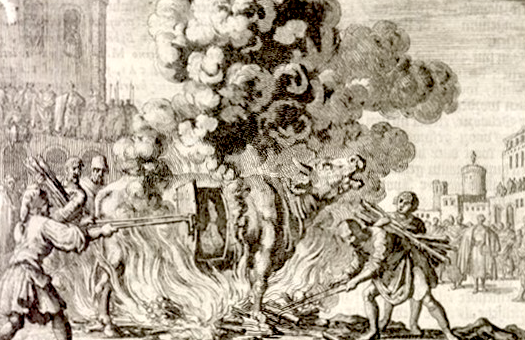
Perillos of Athens, invented what came to be known as the brazen bull. Also called the bronze bull and the Bull of Phalaris, it was made sometime between 570 and 554 BC.
The inventor gave the bull as a gift to the tyrant Phalaris and had hoped to receive a reward for the gift.
The Brazen Bull was a hollow bronze metal bull. A door on the side of it opened up and the condemned was to be placed inside the torso of the bull.
A fire would then be lit under the belly of the bull and it would then be slowly heated up with the person inside of it.
The bull’s nose was packed with incense to mask the scent of roasting flesh and as the bull became hot enough to cook the person inside of it, steam and smoke would come out of the bull’s nose.
It was believed that pipes were built into the bull so that the screams of the condemned were distorted and made it seem as though the bull itself was bellowing. This was said to have provided extra entertainment for the crowds who witnessed the executions.
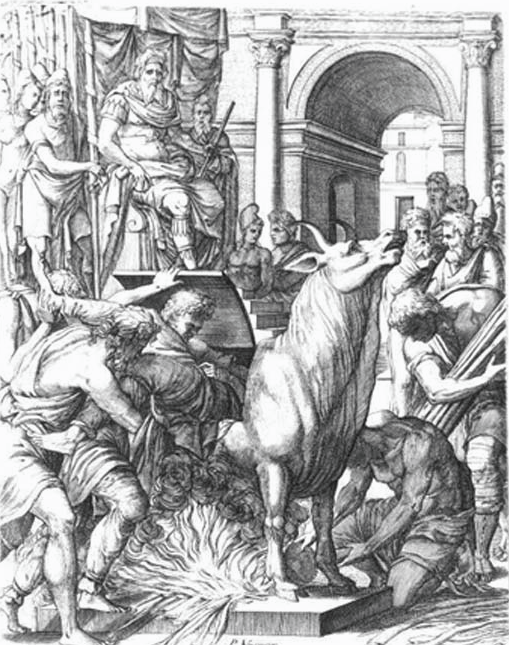
After the condemned was burned to a mere crisp, it is said that Phalaris had the bones made into bracelets.
According to the stories handed down to us about the brazen bull, Phalaris tested the bull out on its inventor. Perillos was asked to show how the pipes worked and he crawled inside the bull’s belly. The door was then shut and the fire was lit, but Phalaris pulled the half-burnt Perillos out of the bull before he died. Instead of allowing the inventor to die inside his creation, Phalaris had the inventor thrown off a cliff.
The tyrant’s brutal reign ended in 554 BC when Telemachus overthrew the city and had Phalaris roasted in the brazen bull.
What eventually happened to the Brazen Bull is unknown. It may have been taken to Carthage after the death of Phalaris. Later, when Carthage fell to the Romans, the bull was lost forever.
The iron chair was another way people got roasted alive. For this fatal form of torture, the condemned would be tied down to an iron chair and pushed closer and closer to a roaring fire. This would cause the condemned extreme pain as he was slowly baked to death.
Another way people were roasted on the iron chair was by building a fire under the seat of the chair. It was, again, a slow and painful death.
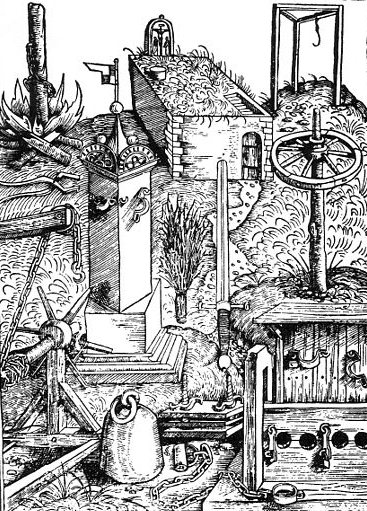
During the Ming Dynasty, a person found disloyal to the emperor could be placed in an upright metal coffin, similar to the Iron Maiden.
A grate lined the bottom of the coffin. Beneath this, hot coals and water were used to fill the coffin with steam so that the condemned was literally steam cooked.
Another unpleasant way to get baked was by foot roasting. In ancient Rome, this process involved pressing red hot iron plates to the soles of the victim’s feet.
The Spanish Inquisition made this torture even more brutal by coating the victim’s feet with lard and roasting them slowly over a small fire.
In Scotland, a rawhide boot was soaked in water and put on the victim’s foot and lower leg. The rawhide was held in place tightly with rawhide cords.
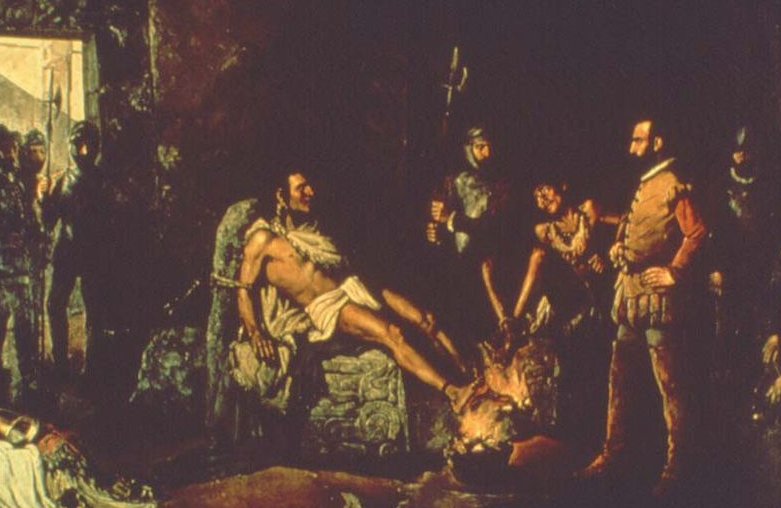
The torture began when the foot was warmed over a fire. As the rawhide dried, it contracted until it squeezed the foot and dislocated the bones.
One of the most well known forms of fire torture is burning at the stake. This form of capital punishment has been used around the world and we see burning as a form of punishment in the code of Hammurabi.
In ancient Egypt, women could be burned at the stake if caught committing adultery.
In ancient Rome, Christians were ordered to the stake by Emperor Nero for the burning of Rome. Called tunica molesta, the Christian terrorists were stripped of their clothing and forced to wear a flammable tunic that was made of papyrus and coated in wax. The condemned was then fastened to a pole.
Unlike the popular witch burnings during the Inquisition, a fire was not lit under the condemned. Instead, a combination of burning pitch and lard were poured over their heads and the condemned became a literal burning candle.
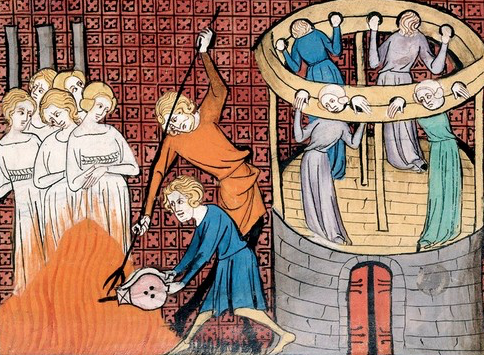
In 390 AD, after Christianity became the state sanctioned religion of Rome, Emperor Theodosius put forth an edict which called for the burning of male prostitutes.
During the Lepers’ Plot of 1321, lepers were accused of poisoning wells. France rounded up all the lepers they could find and burned them alive.
Homosexuality was also punished by burning at the stake throughout Europe from the 12th to 18th centuries.
The 2nd to last death sentence by fire happened in Germany, on July 13, 1804. Johannes Thomas was placed in a wooden chamber built above the pyre. Pipes filled with sulphur led to the chamber and when the fire was lit, Thomas died from sulphuric poisoning before the flames reached the chamber and burned his body.
The last death sentence by burning happened in Berlin, May 28, 1813. Christoph Peter Horst and his lover Friederike Louise Christiane Delitz were strangled to death after they were tied to the stake. They were then lit on fire.

